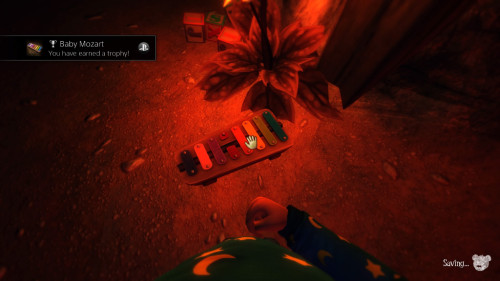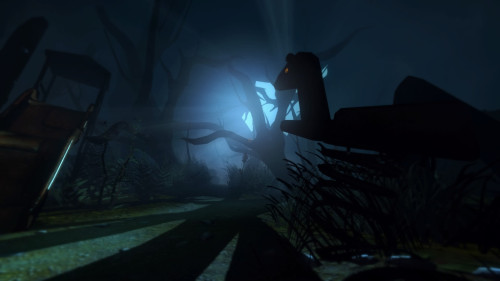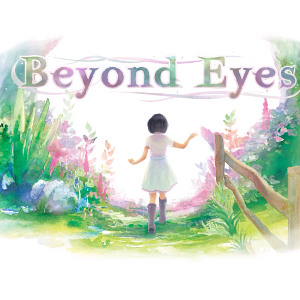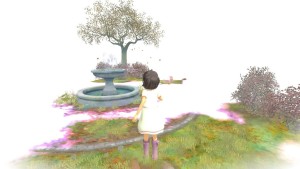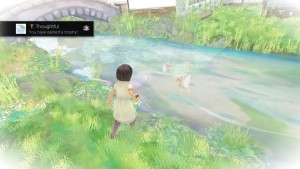 Developer: David OReilly
Developer: David OReilly
First Release: 21st March, 2017
Version Played: PlayStation 4
Available: PS Store US | PS Store UK | Steam
You are everything and everything is nothing.
This is a simulator where you can become any of the things in the game. You start as an animal (I was a sheep). Wandering around will yield guidance on how it works and new abilities will be unlocked. Alternatively, you can leave the controls and let the game play itself, because the game doesn’t need the player to guide it. This would be an odd choice in most games, but it fits the themes well. Nothing is more essential than anything else, and that includes the player.
The art and animation choices are immediately apparent. The models are low detail and the land animals don’t animate. Instead, they either roll over end to end or skitter along, like they were toy animals being pushed by a child. Some things do have basic animations, such as birds flapping their wings and plants growing. I mostly didn’t have a problem with the animations, but the blur when ascending/descending into things did cause some motion sickness. I did like that the thunder storms didn’t have bright flashes of light (I’d note for those with flash issues, some of the disasters are a bit flashy, but they can be turned off).
Once the ability to ascend/descend to different scales is unlocked, it gets a whole lot more interesting. You can descend into the grass and then the microscopic level. You can ascend to continents, planets and galaxies. As the game continues, you get abilities that mean being able to change the size and type of thing, should you want to do so. I released giant geckos on one continent and left miniature planets between cracks in a city pavement.
During all this, it’s possible to listen to the thoughts of some of the other things. These are collected and used to generate your own thoughts. Those generated thoughts range from nonsensical to the inadvertently profound.
Image Caption: I’m a block of flats framed against the sky and having a thought constructed from the thoughts I’ve heard. The thought reads: “Is ludicrous to go on forever, but sometimes we make them short. Remember that happens.”
The narration is from a series of lectures by the philosopher Alan Watts. They were recorded between 1965 and 1973. His lectures deal with the general nature of reality, and that divisions are something that people create, rather than an innate part of the universe. At the same time, there are also elements of the lectures that are dated. Despite talking about how divisions are culturally constructed, he still considers men and women to be inherently opposite and unknowable to each other. Trying to explain anxiety disorders in terms of a philosophical crisis also really doesn’t work. The lectures weren’t anything new to me in terms of basic concepts, but they were interesting from a historical perspective. He’s a good speaker who explains his ideas clearly.
There aren’t many set goals in the game, as it focuses more on being a sandbox. There is the tutorial to complete, though it’s somewhat more lengthy and involved than most things labelled as tutorials. I enjoyed the ending and the unique area for the tutorial. Broader goals are to complete the catalogue of different things and listen to all the narration. I hit a few issues with collecting all the things, as some of the things disappeared from my universe. This can be solved, as each area can be reset to its starting point, which brought them back.
Image Caption: I’m a herd of rolling white unicorns on a purple alien world with giant bacteriophages. The white circle at the top is the game interface.
I enjoyed wandering around to find the things and listening to the lectures. It was interesting to see a game with world/universe simulator themes, but not from a perspective where the player is a deity looking down on the playing area. The player is an ordinary thing in the universe and manipulates it from that position. Time does not go faster or slower based on global game settings, but by becoming things with different perceptions of the passage of time. The exploration side appealed to my love of walking simulator games, as there were a number of environments to explore.
However, there are some weaknesses. The vehicle behaviour has some issues, which means cars get stuck running down the river instead of on the road. An area has train viaducts, but the trains run on the grass next to them. Also, some scales are a little sparse on things. This is particularly true of the larger scales. It would have been nice to see some gas giants and a wider range of stars. The range of options to customise the experience was mostly good, but an instant alternative to the ascend/descend blur would have been a useful accessibility feature.
This game will appeal to players looking for an experience to wander around in. It’s not a game for players looking for strong narratives or structure. Note that it does discuss themes like death, and some things have thoughts that are suicidal or self-hating, so it may not be the game to play when needing a break from that.
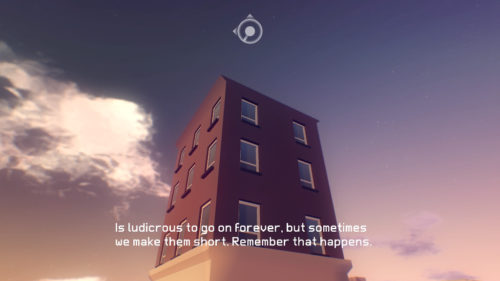

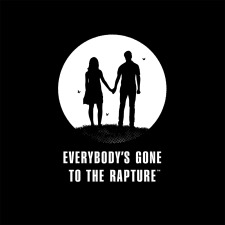 Developer: The Chinese Room
Developer: The Chinese Room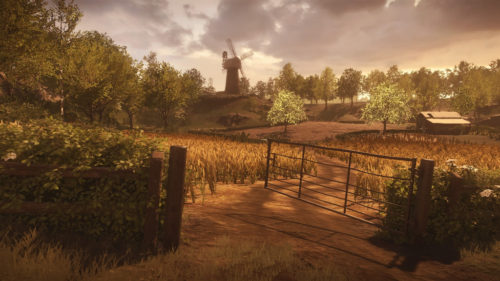
 Developer: The Fullbright Company
Developer: The Fullbright Company Developer: Krillbite Studio
Developer: Krillbite Studio